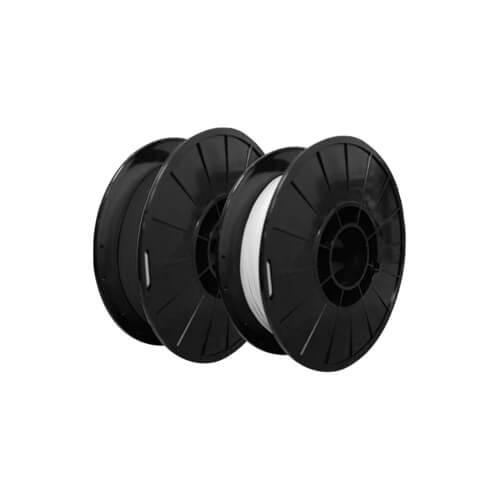This website uses cookies so that we can provide you with the best user experience possible. Cookie information is stored in your browser and performs functions such as recognising you when you return to our website and helping our team to understand which sections of the website you find most interesting and useful.
- Home
- Materials
- CNC Machining Plastic
- Nylon
- Nylon 6
Nylon 6

Material Type
Plastic
Material Name
Nylon 6
Alternative Names
Polyamide 6, PA6
Process Compatibility
CNC Machining, Injection Molding
introduction
Nylon 6 in CNC Machining and Injection Molding

Nylon 6 is a type of polymer classified as a semicrystalline polyamide commonly used in various industrial applications due to its excellent combination of properties.
Nylon 6 is generally considered easily machinable and has good wear resistance. It has good dimensional stability and low internal stress. However, Nylon 6 can leave burrs after machining, so we do necessary deburring operations to achieve the desired final product. Additionally, Nylon 6 has some degree of moisture absorption, which can affect its dimensions. Depending on the application, it may be necessary to consider post-machining treatments or design considerations to account for potential changes in dimensions over time.
Unlike most nylons, it is unique because it's formed through ring-opening polymerization, not condensation polymerization. This sets it apart from other types of polymers. Nylon 6 can be chemically modified for improved toughness, flexibility, or flame resistance. It resists hydrolysis, maintains integrity in water, and withstands mild acids and bases, though corrosive solutions may cause degradation over time.
Properties
Properties Table of Nylon 6
| MECHANICAL PROPERTIES | |
|---|---|
| Ultimate Tensile Strength | 64.7-79.1 MPa |
| Yield Strength | 51.2-63.8 MPa |
| Young's Modulus | 1.58-1.97 GPa |
| Elongation at Break | 200-300% |
| Hardness | 16.4-18.1 HV |
| Flexural Strength | ~170 MPa |
| Impact Strength | ~45 kJ/m² |
| Elasticity | High |
| Modulus of Elasticity | ~6 GPa |
| Creep Resistance | Good |
| Wear Resistance | Good |
| Machinability | Moderate |
| Moldability | Good |
| Physical Properties | |
| UV Resistance | Fair |
| Ductility and Flexibility | Moderate |
| Density | ~1.40 g/cm³ |
| Weight | Light |
| Temperature Resistance | Up to approximately 120°C(248°F) |
| Chemical Resistance | Good resistance to many chemicals |
| Porosity | Low |
| Thermal Properties | |
| Maximum Service Temperature | 90-130°C |
| Thermal Expansion Coefficient | 88.2-91.8 x 10^-6/°C |
| Thermal Conductivity | 0.294-0.306 W/(m·°C) |
| Electrical Properties | |
| ESD Safety | No |
TECHNOLOGY OVERVIEW
Basic Knowledge of Nylon 6
What is Nylon 6?
Nylon 6, with the chemical formula (C6H11NO)n, was invented by German chemist Paul Schlack in 1939. There are eight types of nylons, distinguished by the number of carbon atoms in their monomers. Nylon 6 gets its name from having 6 carbon atoms in its structure. It stands out for its stability, resisting acids, alkalis, and solvents in harsh environments. While it can absorb moisture, it has lower water absorption than other nylon types. With a high melting point of 210-220°C, nylon 6 handles high temperatures well. It shows good thermal stability and generally resists chemical reactions, except with strong acids and bases. Though it has fair UV resistance, prolonged sunlight exposure may lead to degradation, which is preventable with additives. While inherently flammable, flame-retardant additives can enhance its fire resistance.
Advantages of Nylon 6
- High strength and durability
- Abrasion resistance
- Chemical resistance
- Low moisture absorption
- Ease of processing
- Good thermal properties
- Lightweight
- Electrical insulation
- Wide range of applications
- Recyclability
Applications of Nylon 6
- Textiles and apparel (hosiery, stockings, sportswear)
- Automotive components (gears, bearings, bushings)
- Engineering plastics (electronic components, gears, structural parts)
- Packaging materials (films, sheets)
- Consumer goods (toothbrush bristles, fishing lines, zippers, luggage)
- Industrial applications (conveyor belts, hoses, gaskets)
- Sports equipment (racket strings, fishing nets, outdoor gear)
- Electrical and electronic components (cable sheathing, connectors)
- Medical devices (certain components)
- Filament for 3D printing
FAQ
Machining Nylon 6 Buying FAQ
Other Materials
Get An Accurate Quote For Your Next Projects
No matter your project is complicated or simple, no matter is metal or plastic, you will get an accurate quotation within 6 hours.
Get A Quote Today